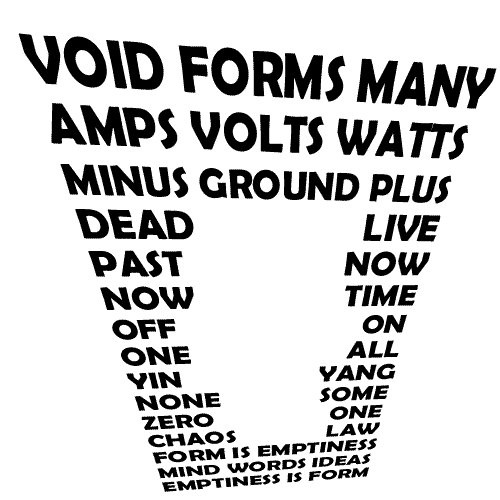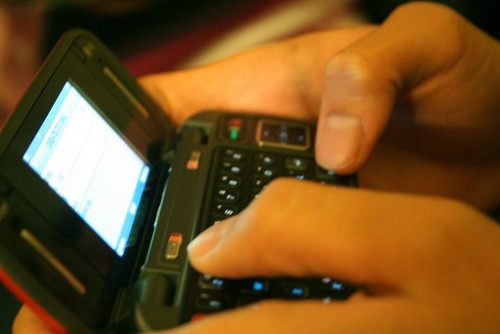Text
To elucidate the concept of “text” I decided to upload this clip from the documentary series Testament, presented by historian John Romer. The series, which was originally aired in 1988, is about the history of the Bible—how it was created and how it has featured in people’s lives throughout history. In this clip, which actually consists of a small clip from the beginning of episode 3 with a clip from the end of the same episode, a narrator reads from the rules of how a Jewish temple scroll is to be written. (Notice that it says no part of the scroll is to be written from memory.) John Romer also tells an interesting story that illustrates the idea that a text is authoritative. In an oral tradition there is no authoritative version of a story. A person tells the story from memory and can change it to suit his or her purposes, usually in response to the reactions of the audience. I was reminded of this clip when listening to James O’Donnell’s discussion of early Christianity and its dependence on writing.

September 23, 2009 No Comments
Text
Here is a link to a really interesting site where they use words to create some very powerful pictures. http://designm.ag/inspiration/text-art/. Text can literally be used to create pictures, which is what text does in a more abstract sense. It is through text whether it is a poem, instructions, a narrative, or just a name- the reader creates a picture from interacting with the text.
September 22, 2009 1 Comment
Text
I created a voicethread to incorporate my thoughts on text.
References
text. (2009). In Merriam-Webster Online Dictionary.
Retrieved September 16, 2009, from http://www.merriam-webster.com/dictionary/text
Wiktprintable without text.svg. Digital image. Wikimedia Commons. 27 Mar. 2009. Web. 16 Sept. 2009. .
September 19, 2009 No Comments
The Art of Text
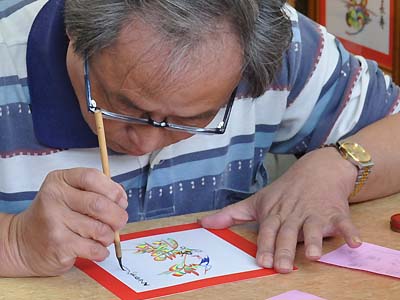
Coming from a design background, I have come to see text as an art form that is often manipulated as content or as part of a layout and for me, that is usually how I intermingle text with technology. Text is no longer a static form but it can also be animated. Looking back at the origins of text in its more static form, some examples of text as an artistic, symbolic form is its use in hieroglyphs and asian characters. Technology works to, in some form, mechanize the text through writing tools, printers and other text-making tools.
One mingling of text and technology that came to mind is the use of calligraphic tools not just for communication but as an art form. In Asia, the calligraphic brush was more widely used in the past to paint characters in languages. When painted, the symbols have flowing strokes and lines, with some strokes more emphasized than others. Today, those same characters in print have been “mechanized” and converted into harsh lines and strokes that are even throughout. The same can be said for handwriting.
What are the implications of text and technology today: How much have computers created a kind of convenience in the way we communicate and will handwritten texts still exist in the future? In the last 10 years alone, I think technology has done a great deal in changing the way we look at and learn how to use text using computers, cell phones and other, more advanced non-traditional devices.
Marjorie
September 18, 2009 2 Comments
Nailing Down Technology

“Technology” is almost as broad of a term as “text,” however; in the context of ETEC540, it’s a little easier to nail down. My new understanding of these two concepts is that they clearly have something fundamental in common. They are clearly both SYSTEMS. Examining them together has helped me see this significant overlap. Could we have “text” without “technology?” No, because text is a technology of communication. Could we have “technology” without “text?”
September 17, 2009 1 Comment
French Text Soup

If you boil down all the definitions of “text” on medium heat and stirring often, what you get is essentially “language” soup. Like an onion, both concepts can be deeply layered and infinitely complex, but both have the same general purpose. Okay, so what is language then? Well, it’s a system of communication. And what’s the general purpose of an onion?? Well, to give us bad breath and make us cry.
September 17, 2009 No Comments
Text we R, text i AM
Text, to me, is what we are, what I am. I love words and everything they make us and give us. I love reading. I love seeing words. In this information age, text defines us and gives us life. Text has allowed us to progress and move forward, but it has also isolated us from one another. We no longer need to seek the company of others in person. We can enclose ourselves in the safety of our homes and take on any persona our imagination allows. To me, text is me. It is the first time my daughter spells her name with the inverted C.
I chose the above concrete poem to represent what text is to me because it conveys what text is. It does an excellent job of illustrating the depth and breadth of text in modern languages.
September 16, 2009 No Comments
Textual Systems

news obsession word flow experiment #1, originally uploaded by Samuel Huron.
September 16, 2009 No Comments
Face-off: OED and Wikipedia
I am not nearly as brave as Drew, although we used the same springboard. He posted a wonderful multimedia interpretation. I’m afraid I’d be too incoherent. Six classes, three meetings, and twelve hours later, I will be grateful if I can form thoughts and type them. But here it goes…
The OED and Wikipedia connection and comparison offered in Module 1 is interesting. In my position teaching college students research skills, I am often called into classroom to destroy the authority of Wikipedia. Instead, I highlight its wonders and woes as I would with any resource.
Consulting Wikipedia for text was enlightening. There are eight entries. The longest by far is for the recent text messaging. The eight entries have multiple sub-headings and present very detailed accounts of text messaging’s social impact and worldwide use. Other entries of note are for the Swedish band, Text, and text as it applies to computing, “ordinary, unformatted, sequential file.” I started to ruminate on the entry for text as it relates to computing, (and might add another post) but decided to stay on course for the course.
Text (literary theory) needs to be “wikified to meet Wikipedia’s quality standards.Please help by adding relevant internal links, or by improving the article’s layout”. The other entry similar to OED, referring to the Bible/scripture, has no link to further information.
I’m reminded of Ammon Shea, author of Reading the OED: One man, one year, 21 730 pages, who described the OED as “a catalog of the foibles of the human condition”. It’s a reflection of its time, an historical perspective. The OED attempts to align with current communication and incorporate new word styles once they graduate from fads (CBC has wonderful, short segments lamenting additions from Homer’s “Doh!” to cyberphobic) but cannot keep pace with the ferocity with which Wikipedia grows.
The OED’s James Murray relied on Dr. William Chester Minor for close to ten thousand submissions while Wikipedia relies on millions from the masses. Dr. Minor was a murderer, clinically insane, and committed to an asylum. (The Professor and the mad man: A tale of murder, mystery, and the making of the Oxford English Dictionary details their extraordinary relationship as well as the building of the OED.)
I don’t mean to be delivering book reports, but the above helped me situate the two terms we’ve been deliberating – text and technology. I return to Drew’s post where he highlighted their interconnectedness. I do not argue against his thoughtful conclusions, but offer a twist. The emergence of technology forced a growth or manipulation of the understanding of text. As technology took hold, the other had to adapt or was adapted. I appreciated the images of weaving in the reading and on this blog, but am wondering if, in this case, there’s more of a push-pull; if technology isn’t subsuming text? And if so, what does this forecast?
I must truly be tired… as Derrida springs to mind. The relationship between the signifier and the signified shifts. There is nothing concrete and the signified varies in context – culture, time, etc. As I’ve just dumb-downed Derrida, I should stop. Actually, I should most likely wait until text‘s entry is wikified or be proactive and perform the ‘wikifying’ to create my own wikiality. (I’ve been trying to link to Stephen Colbert’s clip for half an hour, but am left hanging each time and now the icons are greyed out.)
September 16, 2009 No Comments
Text is…by Tracy Gidinski
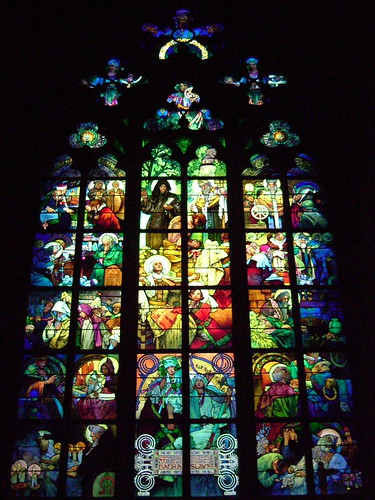
Prague – stained glass window, originally uploaded by thebevster.
This Mucha stained glass in St. Vitus’ Cathedral in Prague represents to me what text is. What I love about this stained glass is its modern take on a classic format. Instead of copying the style of the past when Mucha was asked to design it in the 1930’s, he wove history and the present day together to create something that represented both his history and his modern era. Likewise, text is the capturing of a culture at a given moment while simultaneously weaving in elements of that culture’s history.
Additionally, like Mucha’s stained glass techniques included modern technologies, making his images different than those of the past, new technologies add change and new shape to text.
Therefore, text and technology cannot be viewed as separate entities but as reflections of one another.
September 15, 2009 No Comments
What is text?
Since being made aware of the fact that the word text is contained in the words texture and textile and is defined as “woven words” in Module 1, I’m reminded of the song Tapestry by Carol King, that relates to the words textile and texture. In The first stanza, she compares her life experiences to a tapestry, which is a form of textile that has a rich texture. She says that she can see and feel the experiences in her life, but she can’t hold on to the experiences. Here are the lyrics of the first stanza of this song:
“My life has been a tapestry of rich and royal hue
An everlasting vision of the ever changing view
A wondrous woven magic in bits of blue and gold
A tapestry to feel and see, impossible to hold”
Carol king wove the words of the first stanza together to form text that began a very lyrically rich song.
September 15, 2009 1 Comment
Texts are Material Artifacts that Take Many Forms
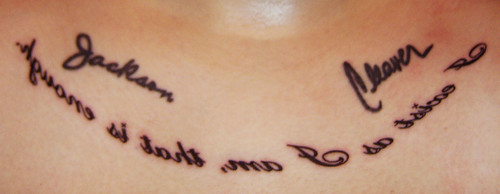
wwquotetattoo, originally uploaded by kawaface.
Like technology, the word text is difficult define as its meaning is altered depending upon context and form of communication. I found the definition of text provided by Florida State University, a good starting point to understanding the relationship between of text and technologies.
“Texts are material artifacts that take many different forms: cave paintings, tattoos, stone tablets, clay tablets, papyrus scrolls, manuscript books, musical scores, maps, printed books, engravings, newspapers, photographs, films, DVDs, computers. Every kind of text is produced by a special technology, but all those technologies share a simple purpose: they were designed to supplement the fragile human mind by providing a more durable artificial memory system. Those technologically preserved and transmitted memories are the foundation of all human culture”
(Emmerson et al., 2009, para. 1).
Prior to finding this definition I had never given much thought to tattoos as text. Emmerson et al. (2009) refer to technologies that produce text as “durable artificial memory system[s]”. Many people get tattoos as a permanent reminder of a special memory or person or a meaningful image, saying or word. Though I know many cultures use tattooing in traditional rituals, I had not considered the deeper implication of human skin as a vehicle for preserving and communicating information and memories. I choose the accompanying photo as it depicts tattoos of a person’s family names as well as a Walt Whitman quote – meaningful to the person whose skin it is preserved on.
References
Emmerson, R., Gontarski, S.E., Taylor, G., Walters, L., & Wiegand, W.A. (2009). Pathways to excellence: History of text technologies (HOTT) from cave paintings to personal computers. Retrieved September 13, 2009, from http://pathways.fsu.edu/faculty/hott/
September 14, 2009 No Comments
Library 2.0 searching for meaning
Hi everyone,
After reading through the WordPress entries today, I found that most of the passages I wanted to use had already been quoted. As a result, to find a short passage that gives meaning to the word text I decided to try my luck using the “Great Library 2.0”, i.e. Google Books, using the search terms “defining text”. I expected to find a deep, philosophical quote that would WOW you all. Well, I was indeed, surprised by the results. Of the top twenty hits, thirteen were in some way related to computer programming or desktop publishing software. I then tried a more refined search by looking for the exact phrase “defining text” (I did not use quotations the first time). This actually increased the number of computer related books to sixteen. “Define text” resulted in sixteen as IT results as well. Many searches later, I tried searching for “the origins of text”. Finally I started seeing some relevant results. However, there were still results for Unix and a text-mining computer application.
While the search results alone do not provide a passage that gives meaning to the word text, I think that the results shed light on the changing definition of the word text in the information age. The word text has become synonymous with the inventions of the digital age: text as a programming language, text as the basis for word processing, text as the foundation of the World Wide Web, etc. This was also stressed by O’Donnell and Engell when discussing the impacts that technology has had on education and on today’s youth, especially in regards to new language developing in text and e-mail. Technology not only redefines and revolutionizes text, it also reshapes the way interact with text and changes and reinvents the media through which we use it to communicate.
John
September 14, 2009 No Comments
Texting, Text and Technology
The warning was clear.
“Don’t spend too much time wandering in the Commons: it can be an amazing place in which to get lost!” (Module 1, instructions for Flickr activity).
I got lost anyway. For days I searched for the image that I thought would be indicative of the issues relating to the course, until it hit me. Literally.
He was a preppy-looking teenager, busily texting on his iPhone. He never looked up, even after our brief, but painful physical contact. When function was finally restored to my thumbs, I did the only natural thing: whipped out the cell phone and wrote myself a reminder through email — “Idea for Flickr activity: TEXTING!”
The connection between texting and text and technologies is self-explanatory and almost too obvious. Creating text using cell phone technology! Of greater interest though, is how computer technology and new software are changing our language patterns, as evidenced by the addition of podcasting to the Oxford English Dictionary in December 2008, and when third graders scurry over after a read-aloud and comment, ‘”O.M.G! That was such a funny book, L.O.L”
September 13, 2009 No Comments
Shedding light on the meaning of text
This is a passage from Richard Vella’s lecture originally presented in a fourth year composition class at the Sydney Conservatorium of Music, 1989. Entire lecture can be viewed at http://www.rainerlinz.net/NMA/repr/Music_theatre.html
Text does not mean words but rather the word text comes from the latin texere , to weave. Textum came to mean the tissue or web of a thing which is woven. The texture is then anything that is woven, the quality of the weave. In other words the text is the weaving together of all the elements into a shape, fabric, form. In music this came to mean texture. The text of a book or essay is the weaving together of all the various arguments via words. In film and opera the text is the weaving of the sonic and visual via their respective technologies. Texture is the fabric, text is the argument.
The setting of words to music is not simply text and music but rather the text is the overall weaving of the literary text with the musical texture. The text is the `meaning’ (argument) the composer wants to communicate via all these elements.
September 13, 2009 No Comments
Text
Text is away of expressing information. I view the ability to express yourself and share those expressions with others to be of great importance. Expressions can be in the form of ideas, concerns, issues with social status, or simple musings. I chose to include a few lyrics from an N.W.A. song because they represent a movement in American society in which an underprivileged and racial discriminated group used the power of text translated to music to express their opinion on contemporary society. You can watch the video, on youtube, which adds images to enhance the text here. Sorry no Embedding possible….

I’m expressin’ with my full capabilities,
And now I’m livin’ in correctional facilities,
Cause some don’t agree with how I do this.
I get straight, meditate like a Buddhist
I’m droppin’ flava, my behaviour is heriditery,
But my technique is very necessary.
Blame it on Ice Cube… Because he says it gets funky
When you got a subject and a predacit.
Add it on a dope beat
And that’ll make you think.
Express Yourself…
Express Yourself…
Come on and do it…
Noah
N.W.A. Retrieved from www.nwaworld.com
September 13, 2009 No Comments
From text to technology

As I looked up the word “text”, I started to see the link from one term to another. It seemed natural to display my findings in this fashion. The yellow bubbles are my own thought processes. Once this organizer was complete, I felt the title could be “from text to technology”.
September 13, 2009 3 Comments
Text is…
The representation of ideas, feelings, concepts and meanings through symbols.
I found this interesting image on Abraham Lincoln. If you take a close look, you’ll see it’s the Gettysburg Address pronounced by Abraham Lincoln (Pennsylvania, USA, 1863). I found this image a “metaphor” on text and the way it can send different messages and concepts depending on the way it is used and arranged.
Image by Yelnoc: http://www.flickr.com/photos/yelnoc/361303918/
September 12, 2009 No Comments
What Is Text?
Weblog posting on TEXT
Given the debate over the academic validity of using sites that are created by a ‘community of experts’, I decided to go to the source that most of us equate with this movement, namely Wikipedia. There it was confirmed that ‘text’ has multiple meanings:
- Plain text refers to computer code
- A text is a coherent set of symbols
- A textbook is an instructional manual
- And a text can refer to a particular Biblical passage
- TEXT is the name of a hardcore band from Sweden
To me text simple means a way to getting a message across and that is why I chose the Rosetta Stone as a pictorial representation of text. Without text we would rely on other means of communication (oral, gesturing, smoke signals etc.). Most if not all of these would be far less efficient than using text in one form or the other. I mean how else would I be able to describe to what text means to me without actually using text?
September 12, 2009 No Comments
